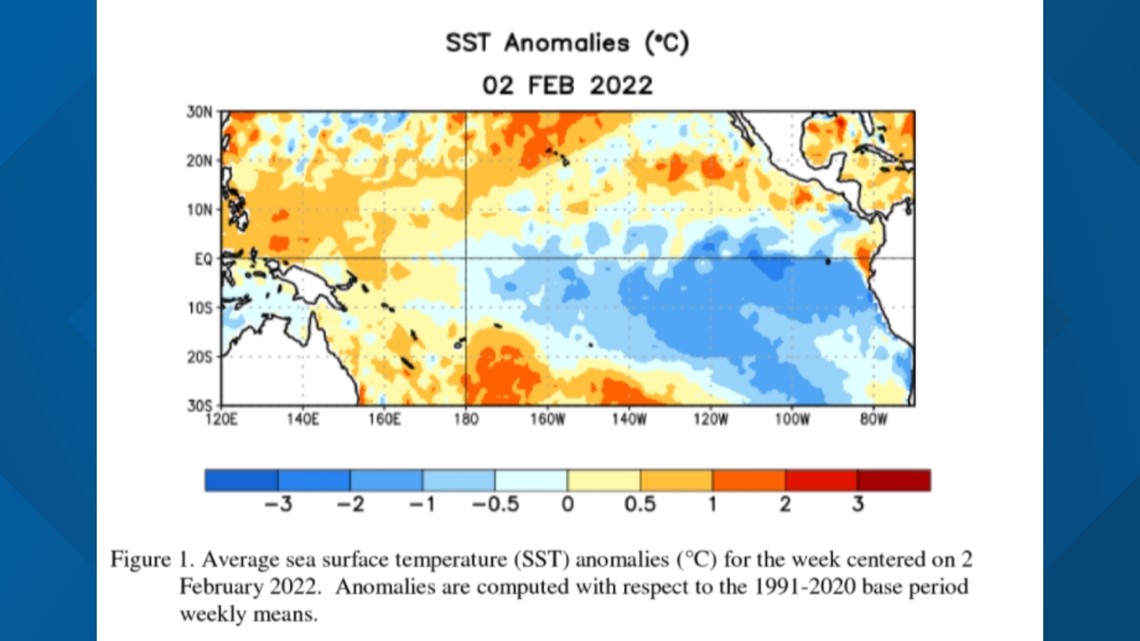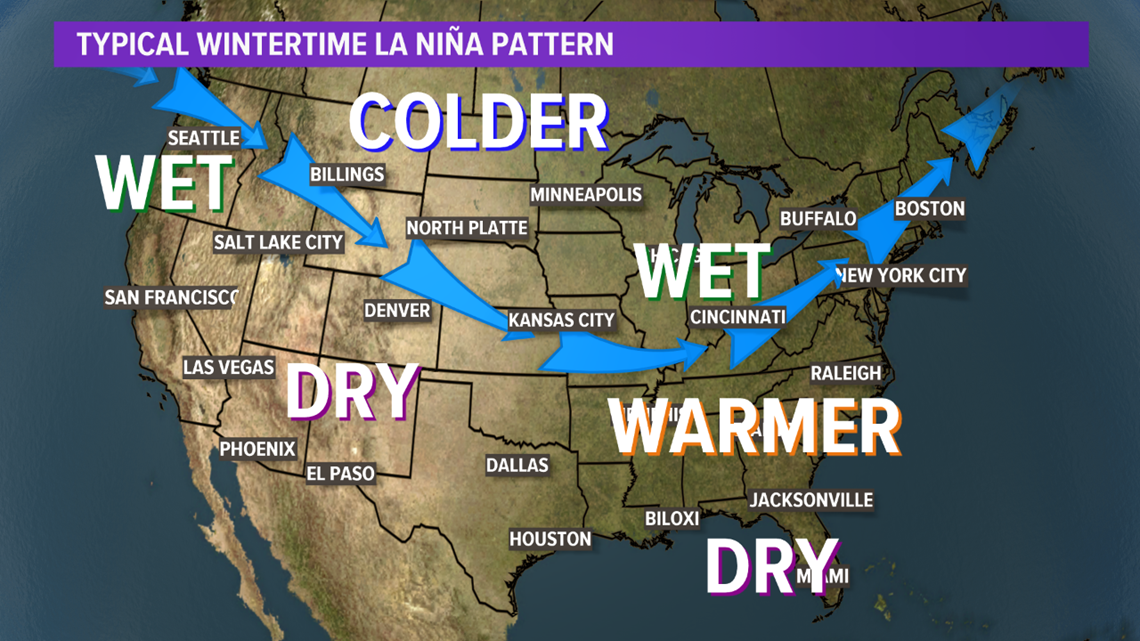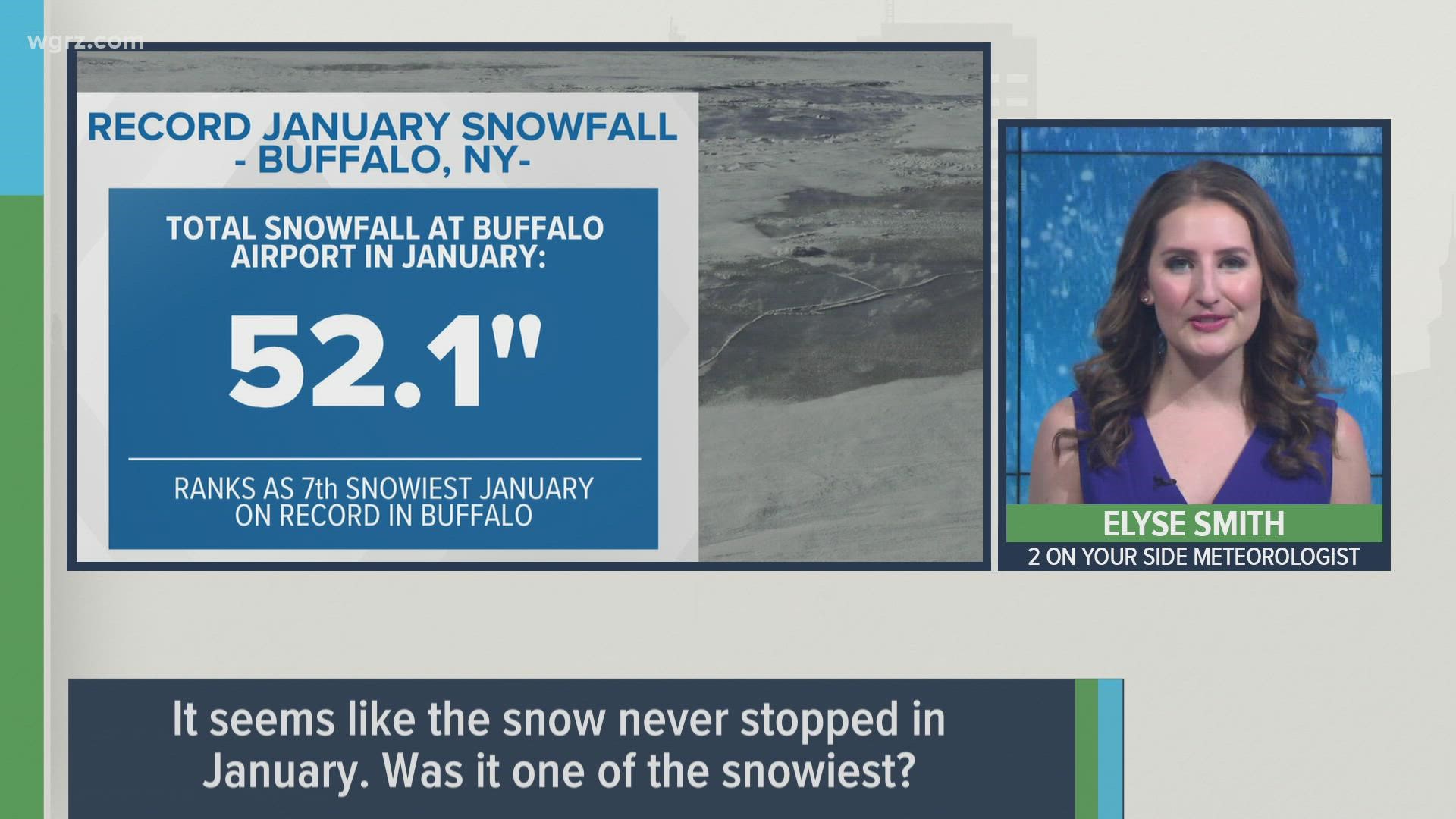BUFFALO, N.Y. — Editor's note: The video above was published on Feb. 1, 2022.
The 2021-2022 La Niña has been impacted this winter across the United States, and the current trend is projected to continue into the spring.
In the recent La Niña Advisory update issued by the Climate Prediction Center, climate forecasters are expecting this event to continue through Northern Hemisphere spring (March to May) and potentially phase out between May and July. Specifically, there's a 77 percent chance for the current La Niña to continue through spring, and then a 56 percent chance for conditions to return to neutral by July of 2022.
Forecasters noted the presence of below-average sea surface temperatures, and the coupled La Niña sea to air pattern, lasted from December to early February and will likely continue at its current strength. However, observations from last month show that the current La Niña actually weakened slightly this January.
The 2021-2022 La Niña has been classified as a weak La Niña with sea surface temperatures only slightly below normal. The previous 2020-2021 La Niña ended up being categorized as moderate event.


This week's update though has a slightly different message than the previous update from back in December, when the current La Niña was given a 60 percent chance of ending in April 2022.
Regardless, the main point here is that the current La Niña will continue for the rest of this winter and possibly into into May. And thus, the initial wintertime outlook holds. Specifically for Western New York and much of the Northeast, the Storm Team 2 and Climate Prediction Center is anticipating above-average precipitation with a this La Niña pattern in place.
That being said, this is all based on the correlating jet stream pattern over the United States when a La Niña is present during the winter. In a La Niña wintertime pattern, the polar jet stream tends to dip farther south across the continental United States. The results of this jet stream pattern varies by location. Even so, it's never a guarantee for Buffalo's winter as the lakes have a heavy influence locally too.


El Niño Southern Oscillation (ENSO) is a large, naturally occurring ocean to atmosphere phenomenon located over the equatorial Pacific Ocean. Its positive phase is an El Niño and negative phase is a La Niña. It's closely monitored year round as it can influence weather patterns across the Northern Hemisphere, especially during the fall, winter and even spring months.

